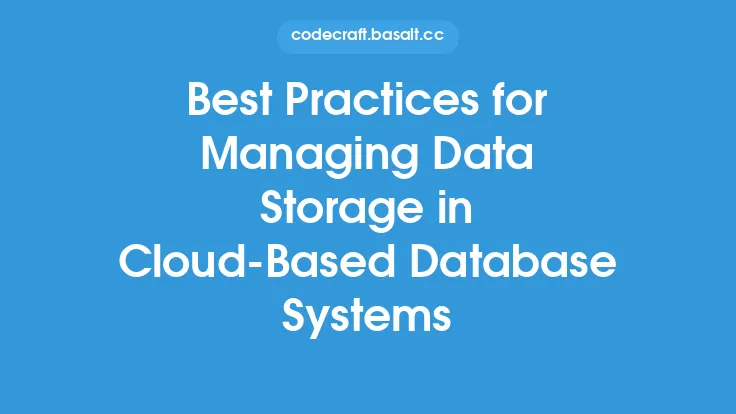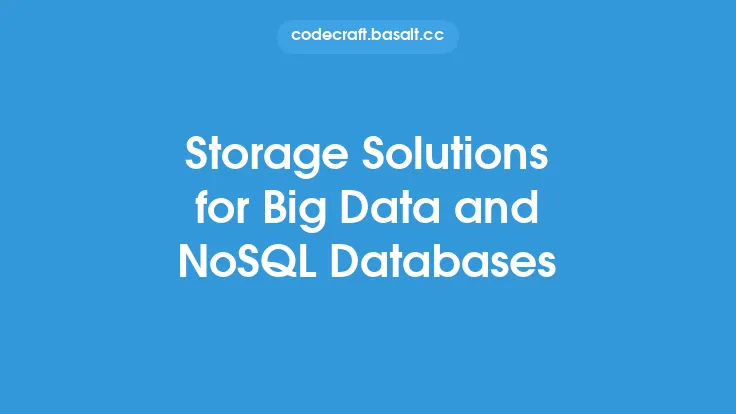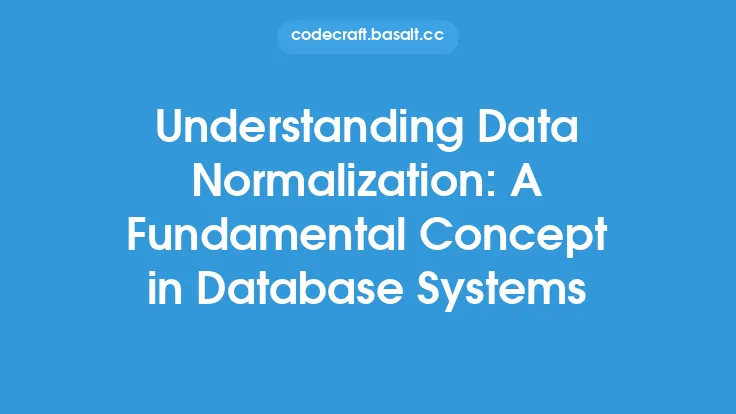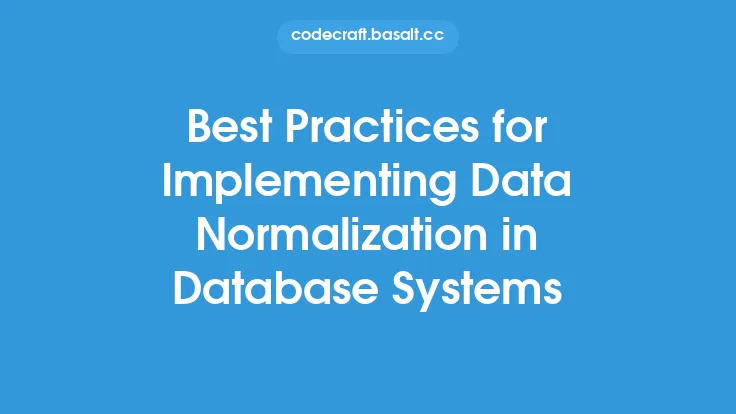When it comes to modern database systems, data storage is a critical component that plays a vital role in determining the overall performance, scalability, and reliability of the system. With the exponential growth of data, organizations are faced with the challenge of selecting the most suitable data storage technology that can efficiently manage and store large volumes of data. In this article, we will delve into the various data storage technologies available for modern database systems, their characteristics, advantages, and disadvantages, to help organizations make informed decisions when evaluating data storage solutions.
Introduction to Data Storage Technologies
Data storage technologies have evolved significantly over the years, from traditional hard disk drives (HDDs) to solid-state drives (SSDs), flash storage, and cloud-based storage solutions. Each of these technologies has its own strengths and weaknesses, and the choice of which one to use depends on the specific requirements of the database system. For instance, HDDs are known for their high storage capacity and low cost per gigabyte, but they are relatively slow compared to SSDs, which offer faster read and write speeds. On the other hand, flash storage solutions, such as flash-based SSDs, offer even faster performance and lower latency, making them ideal for applications that require high-speed data access.
Hard Disk Drives (HDDs)
HDDs are one of the most traditional and widely used data storage technologies. They use spinning disks and mechanical heads to read and write data, which can lead to slower performance and higher latency compared to other storage technologies. However, HDDs are still a popular choice for many organizations due to their high storage capacity and low cost per gigabyte. They are particularly suitable for applications that require large amounts of storage, such as data archiving and backup. Some of the key characteristics of HDDs include:
- High storage capacity: HDDs are available in large storage capacities, making them ideal for applications that require massive amounts of data storage.
- Low cost per gigabyte: HDDs are generally less expensive than other storage technologies, such as SSDs and flash storage.
- Slow performance: HDDs are relatively slow compared to other storage technologies, which can impact system performance.
Solid-State Drives (SSDs)
SSDs are a type of non-volatile storage technology that uses flash memory to store data. They are known for their fast read and write speeds, low latency, and high reliability, making them an ideal choice for applications that require high-performance data access. SSDs are particularly suitable for database systems that require fast data retrieval and storage, such as online transaction processing (OLTP) systems. Some of the key characteristics of SSDs include:
- Fast performance: SSDs offer fast read and write speeds, making them ideal for applications that require high-speed data access.
- Low latency: SSDs have lower latency compared to HDDs, which can improve system performance and responsiveness.
- High reliability: SSDs are less prone to mechanical failures compared to HDDs, which can improve system reliability and uptime.
Flash Storage
Flash storage is a type of non-volatile storage technology that uses flash memory to store data. It is known for its fast performance, low latency, and high reliability, making it an ideal choice for applications that require high-speed data access. Flash storage solutions, such as flash-based SSDs, are particularly suitable for database systems that require fast data retrieval and storage, such as real-time analytics and data warehousing. Some of the key characteristics of flash storage include:
- Fast performance: Flash storage offers fast read and write speeds, making it ideal for applications that require high-speed data access.
- Low latency: Flash storage has lower latency compared to HDDs and SSDs, which can improve system performance and responsiveness.
- High reliability: Flash storage is less prone to mechanical failures compared to HDDs, which can improve system reliability and uptime.
Cloud-Based Storage Solutions
Cloud-based storage solutions are a type of data storage technology that uses cloud computing to store and manage data. They are known for their scalability, flexibility, and cost-effectiveness, making them an ideal choice for organizations that require large amounts of storage and high availability. Cloud-based storage solutions, such as Amazon S3 and Microsoft Azure Blob Storage, are particularly suitable for applications that require massive amounts of storage, such as data archiving and backup. Some of the key characteristics of cloud-based storage solutions include:
- Scalability: Cloud-based storage solutions can scale to meet the needs of large and growing organizations.
- Flexibility: Cloud-based storage solutions offer a range of storage options, including block, file, and object storage.
- Cost-effectiveness: Cloud-based storage solutions can be more cost-effective than traditional storage technologies, such as HDDs and SSDs.
Evaluating Data Storage Technologies
When evaluating data storage technologies for modern database systems, there are several factors to consider, including performance, capacity, latency, reliability, and cost. Organizations should consider the specific requirements of their database system and choose a data storage technology that meets those needs. For instance, if the database system requires fast data retrieval and storage, an SSD or flash storage solution may be the best choice. On the other hand, if the database system requires large amounts of storage, an HDD or cloud-based storage solution may be more suitable. Some of the key factors to consider when evaluating data storage technologies include:
- Performance: The speed at which data can be read and written.
- Capacity: The amount of data that can be stored.
- Latency: The time it takes for data to be retrieved or stored.
- Reliability: The likelihood of data loss or corruption.
- Cost: The cost of the storage technology, including acquisition, maintenance, and operational costs.
Conclusion
In conclusion, evaluating data storage technologies for modern database systems requires careful consideration of several factors, including performance, capacity, latency, reliability, and cost. Organizations should choose a data storage technology that meets the specific requirements of their database system, whether it be an HDD, SSD, flash storage, or cloud-based storage solution. By understanding the characteristics, advantages, and disadvantages of each data storage technology, organizations can make informed decisions and ensure that their database system is optimized for performance, scalability, and reliability. Ultimately, the choice of data storage technology will depend on the specific needs of the organization and the database system, and a thorough evaluation of the options will help ensure that the chosen technology meets those needs.





